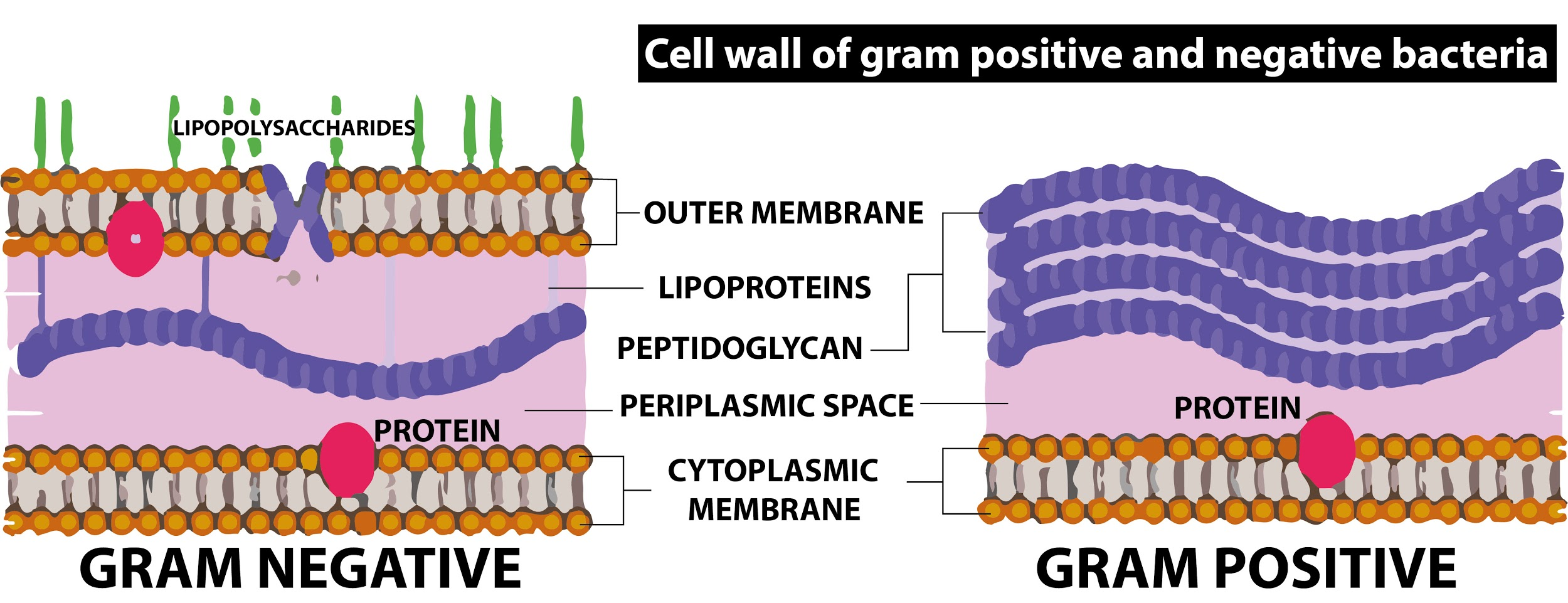Question
Question: Give the difference between the cell walls of gram-positive and gram-negative bacteria....
Give the difference between the cell walls of gram-positive and gram-negative bacteria.
Explanation
Solution
The name comes from the bacteriologist Hans Christian Gram, who invented the technique to classify bacteria into two broad groups -gram-positive and gram-negative based on the staining process.
Complete answer:
| Gram-positive bacteria | Gram-negative bacteria |
|---|---|
| The cell wall is single-layered and smooth | The cell wall is a double-layered structure and wavy in appearance |
| The thickness of the cell wall is about 20 to 80 nanometres | The thickness of the cell wall is 8 to 10 nanometres |
| The presence of the peptidoglycan layer which is multi-layered can be seen | The peptidoglycan layer is present but only a single layer is seen. |
| The presence of teichoic acids is seen | Teichoic acid is absent |
| Porins are absent on the membrane | Porins are present on the outer membrane |
| The lipid content of the wall is low | The lipid content of the wall is about 20 to 30%. |
| Lipopolysaccharide is absent | Lipopolysaccharide is present |
| Sulfur-containing amino acids are absent | Sulfur-containing amino acids are present in the cell wall. |
| The outer membrane is absent | The outer membrane is present |
| Rigid and less elastic | Less rigid and more elastic |
| Periplasmic space will be absent | Periplasmic space is present. |
| The bacteria falling under this category retain a crystal violet color even after they are washed with acetone or alcohol. And appear purple-colored when observed under a microscope | The type of bacteria falling under this category does not retain the stain even after they are washed with acetone or alcohol. They appear in pink colors when seen under the microscope |
| Examples- Streptococcus, Staphylococcus | Examples- Salmonella, Escherichia |

Note: In phylum Chlamydiae , bacteria appear to lack peptidoglycan, although their cell walls have a gram-negative structure. Bacteria belonging to the phylum Tenericutes lack a cell wall altogether, which makes them susceptible to osmotic changes.
